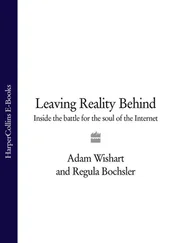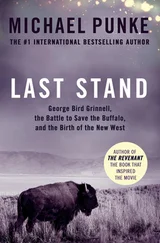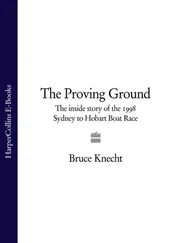Tim and I met privately with Jamie Dimon. A number of CEOs had expressed concern to us that he was using the crisis to maneuver his bank into a stronger position. Indeed, some were convinced that he wanted to put them out of business entirely. We led off by raising these complaints. Jamie assured us that JPMorgan was behaving responsibly but pointed out that he ran a for-profit institution and had an obligation to his shareholders. I emphasized that we needed him to play a leadership role in averting a Lehman Brothers failure.
Then, because I respected his judgment, I pressed Jamie for his assessment of the situation. Did he think we had a chance of putting together an industry agreement to save Lehman? He said it would be difficult but possible. The European banks would have a tougher time getting a quick decision from their boards and regulators, but he felt they would probably come through, too. In the end, I felt reassured that I could count on Jamie’s leadership.
Tim and I spoke to Lloyd in the afternoon. He was still questioning the idea of a private consortium, given the weakness of the industry.
“Do you think this makes sense?” he asked us. “What will you ask for next week when Merrill or Morgan Stanley goes?”
“Lloyd, we’ve got to try to stop this thing now,” I said.
“Goldman will act responsibly,” he replied. “We’ll do our part, but this is asking a lot, and I’m not sure it makes sense.”
Tim and I believed that both Lloyd and Jamie would ultimately support a private-sector consortium, and I was optimistic that the CEOs would come up with a plan. Now we had to make sure that Barclays was on board.
Tim and I returned to the first floor about 3:30 p.m., shortly after Lloyd left, and reconvened a group meeting with the CEOs. I assured them that Barclays seemed interested and aggressive. I didn’t bother talking about BofA. It was obvious from the morning meeting that the Charlotte bank had lost interest. I asked the group to intensify its efforts and find a way to finance any assets Barclays might want to leave behind.
The CEOs were testy, but in what I felt was a productive way. They were being asked to risk billions of dollars. They had been getting due-diligence reports on the quality of Lehman’s assets from their people, and they knew that to make the math work, they would have to make a loan secured by assets worth much less than their stated value. In other words, they would have to take a mark-to-market loss the moment a deal was completed. The question was: how much would they eventually get back?
Vikram Pandit asked why banks like Citi, which had retail-based funding sources, should have to put up as much as those that relied on wholesale funding. After all, it was the investment banks, which lacked consumer deposit bases and depended on the institutional money markets, that were in trouble.
“You’ve got as much wholesale funding as anybody here,” Lloyd Blankfein shot back at Vikram. “And because you’ve got the Fed behind you, you’re like a big utility.”
As ever, Jamie Dimon zeroed in on specifics. “Barclays is going to buy all the assets they want and assume all the liabilities they want, but what liabilities are they going to leave behind?” he asked. “Are they going to take tax liabilities and shareholder litigation from prior years, or is that being left for the Street?”
Tim and I met one last time, for just a few minutes, with Curl and Price from Bank of America. But we made no progress. By the time we had our third call with Barclays that day, at 4:30 p.m., BofA was out of the picture. Everything now depended on the British bank.
Each time we had spoken on Saturday, our discussions had become more granular as Barclays focused on the quality of Lehman’s assets and the due diligence they needed to perform. Earlier, Barclays had also mentioned that its regulator, the Financial Services Authority, wanted to be sure the British bank had an adequate capital plan in place to back the deal, an understandable requirement that we expected could be met.
Now Bob Diamond raised a new, troubling issue. Given the size of the transaction being contemplated, he said, it appeared that Barclays might be required, in accordance with its London listing requirements, to hold a shareholder vote to approve the merger. He said he hoped a vote wouldn’t be needed, but if it was, would the Federal Reserve guarantee Lehman’s massive trading book until the deal was approved? The vote could take 30 to 60 days.
Tim carefully replied that the Fed was unable to provide any such blanket guarantee. But if a vote proved to be necessary, Barclays should quickly come up with their best ideas on how to deal with it, and the Fed would examine its options.
Even as I strived to maintain industry backing for a Lehman deal, Merrill Lynch had been weighing on my mind. The weekend had bought the firm a little time, but I hated to think what would happen come Monday—especially if we couldn’t save Lehman.
Around 5:00 p.m. John Thain, responding to my invitation, walked through the door of my 13th-floor office. He had never been good at hiding his emotions; now he looked somber and uneasy. Tim had to take a phone call, so I began the meeting alone.
By this point, I had begun to suspect that BofA had set its sights firmly on Merrill and the legions of retail stockbrokers that I knew Ken Lewis had long craved. But I wasn’t positive that this was the case, and I felt the need to make sure John understood the seriousness of the situation: Merrill was in imminent danger and he needed to act.
As we talked about the lack of options for his firm, I could see that the full impact of the crisis had settled on John. Just as with Lehman, I stressed, the government had no powers to save Merrill. Under the circumstances, he should try to sell the firm. He said he was exploring his options and talking with Bank of America, Goldman Sachs, and Morgan Stanley. He asked what I thought about a merger between Merrill and Morgan Stanley. I told him it didn’t make sense: there would be too much overlap, and the market wouldn’t like it.
“I agree,” John said.
We also discussed Bank of America. I told him that I believed that BofA was the only interested buyer with the capacity to purchase Merrill. Still, John’s manner was somewhat evasive. I couldn’t tell if he really wanted, or intended, to sell the firm. He himself may not have known at that point.
AIG’s Bob Willumstad arrived at the New York Fed late in the day, accompanied by his financial and legal advisers. We sat down in a conference room on the 13th floor. Willumstad, a soft-spoken man who had once run Citi’s global consumer group, was very candid, admitting that AIG had a multibillion-dollar liquidity problem stemming from losses in its derivatives business and an imminent credit rating downgrade. He now told us that without a big infusion of money, AIG estimated it would run out of cash as soon as the following week. He described efforts to raise $40 billion in liquidity by selling certain healthy insurance subsidiaries to private-equity investors and by using some unencumbered securities from its insurance subsidiaries as collateral. Doing so would require the approval of Eric Dinallo, the superintendent of insurance for New York State. Bob said that the New York regulators supported the plan, and he was optimistic that the problem would be resolved by the end of the weekend.
I knew that Willumstad had gone to Tim earlier to see if AIG could have access to the Fed’s discount window in an emergency, and that Tim had said he couldn’t loan to a nonbank like AIG. It gave me a chill to think of the potential impact of AIG’s problems. The firm had tens of millions of life insurance customers and tens of billions of dollars of contracts guaranteeing 401(k)s and other retirement holdings of individuals. If any company defined systemic risk, it was AIG, with its $1 trillion balance sheet and massive derivatives business connecting it to hundreds of financial institutions, governments, and companies around the world. Were the giant insurance company to go under, the process of unwinding its contracts alone would take years—and along the way, millions of people would be devastated financially.
Читать дальше












